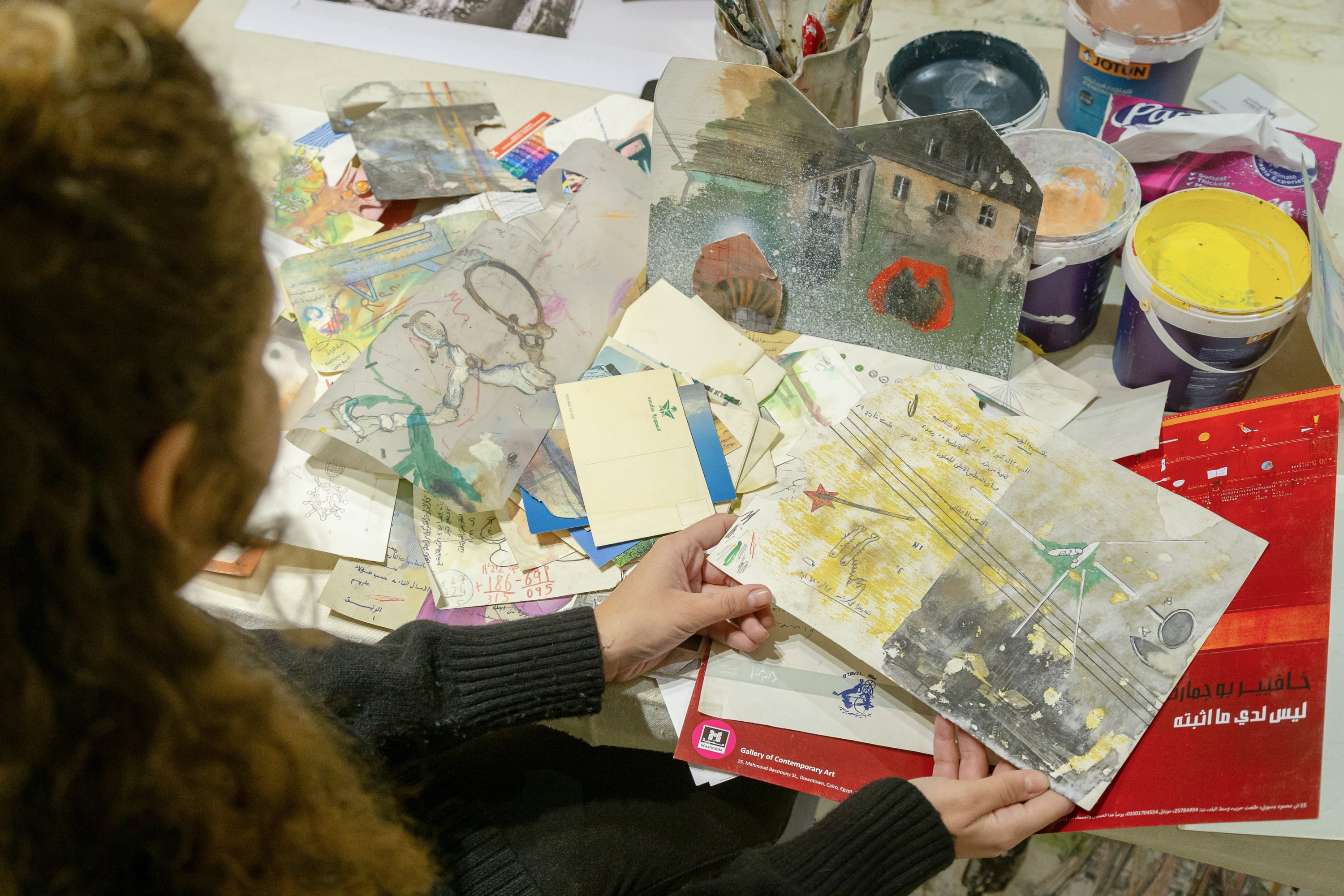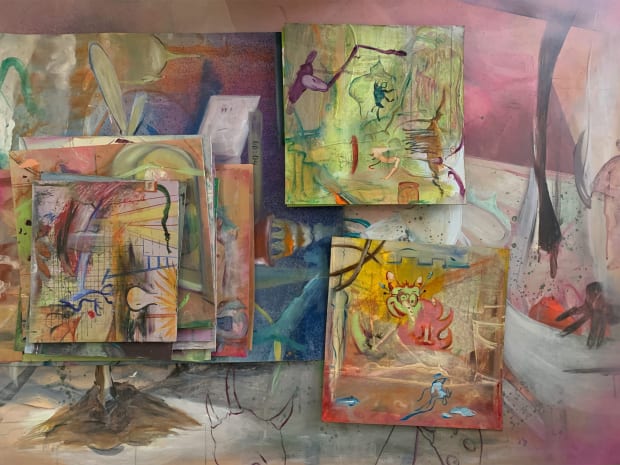-

-
-
TA: There’s an archaeological quality to the exhibition - the way the viewer is positioned as both observer and excavator, piecing together meaning from fragments. Was this intentional?
NB: Absolutely. I love the idea of the viewer as an active participant, not just consuming but interpreting, connecting the dots. The wooden structure in the gallery, for example, serves as a kind of abstract map, guiding the audience through the show but also leaving space for personal readings. The way we make sense of history is deeply subjective - it’s a process of layering, omission, reinterpretation.
EE: In a way, the exhibition is an act of excavation. My largest work, The Blue Wadi Resurrection, sprawls across the floor like an unearthed ruin, while my suspended pieces hover in a kind of limbo, neither fully present nor fully absent. These forms invite the audience to look closer, to imagine what’s missing. -
-
TA: The works feel deeply personal, yet they resist clear narratives. How do you negotiate this balance between intimacy and ambiguity?
NB: I think memory itself is ambiguous. Even the most personal recollections are subject to distortion, retelling, forgetting. My paintings contain snippets of text, hidden beneath layers of paint—phrases from postcards, notes from my grandfather’s archive - but they’re obscured, barely legible. It’s like memory itself: we think we know it, but it’s always shifting.
EE: For me, materiality is key. The fabrics I use carry their own histories - some are worn, stained, imperfect. These materials, like memory, contain traces of the past, but they don’t spell things out. There’s an openness, an invitation for interpretation.
-

-
-
TA: Nada, why do you work with abstraction?
NB: Abstraction allows me to evoke emotion rather than define form. It’s about creating space for the viewer to experience something personal, without the constraints of representation.
TA: Are there any motifs or icons that repeat in your practice?
NB: Motifs like body parts are regularly absorbed in my practice. There is an interaction between body and space, and the recreation of dreamlike processes. I believe that all experiences—whether physical or emotional—manifest through the body, evolving in relation to both the real and imagined spaces we inhabit. The contrast between fluid and sharp lines reflects the tension between organic movement and structure, while the drips and transparencies in my outlines reveal the underlying process of creation. Through these elements, I explore the body’s transformation and its dynamic relationship with both external environments and the unconscious, reflecting themes of identity, change, and the fluid nature of self. -

-
TA: Your works blur the boundaries between personal, cultural, and environmental histories. Do you see them as existing in a space between reality and fiction?
NB: Definitely. I’m interested in what happens when history is reimagined through a dream-like lens. The past is not fixed; it’s fluid, porous. My works are portals into alternate histories - versions of the past that might have been, or that exist in a parallel dimension of memory and imagination.
EE: I approach history as something non-linear, non-binary. My sculptures reference geological time, organic decay, remnants of civilizations- histories that feel both ancient and speculative. The desert was once underwater; fossils of marine life are buried beneath the sand. I think of my works as existing in this in-between space—neither fully past nor present, neither completely real nor entirely fictional.
-
-
TA: The exhibition refuses easy resolutions. Was that a deliberate choice?
NB: Yes. We live in a world obsessed with clarity, categorisation, closure, but history, memory, and identity don’t work like that. Across a Velvet Horizon is about embracing the unknown, sitting with uncertainty, allowing things to remain unresolved.
EE: The exhibition asks questions rather than providing answers. What do we do with what’s missing? How do we reconstruct what has been lost? The beauty is in the search, in the not-knowing.
TA: Finally, what do you hope audiences take away from the exhibition?
NB: A sense of possibility. I hope they leave with more questions than they came with.
EE: A curiosity for what lies beneath the surface.








